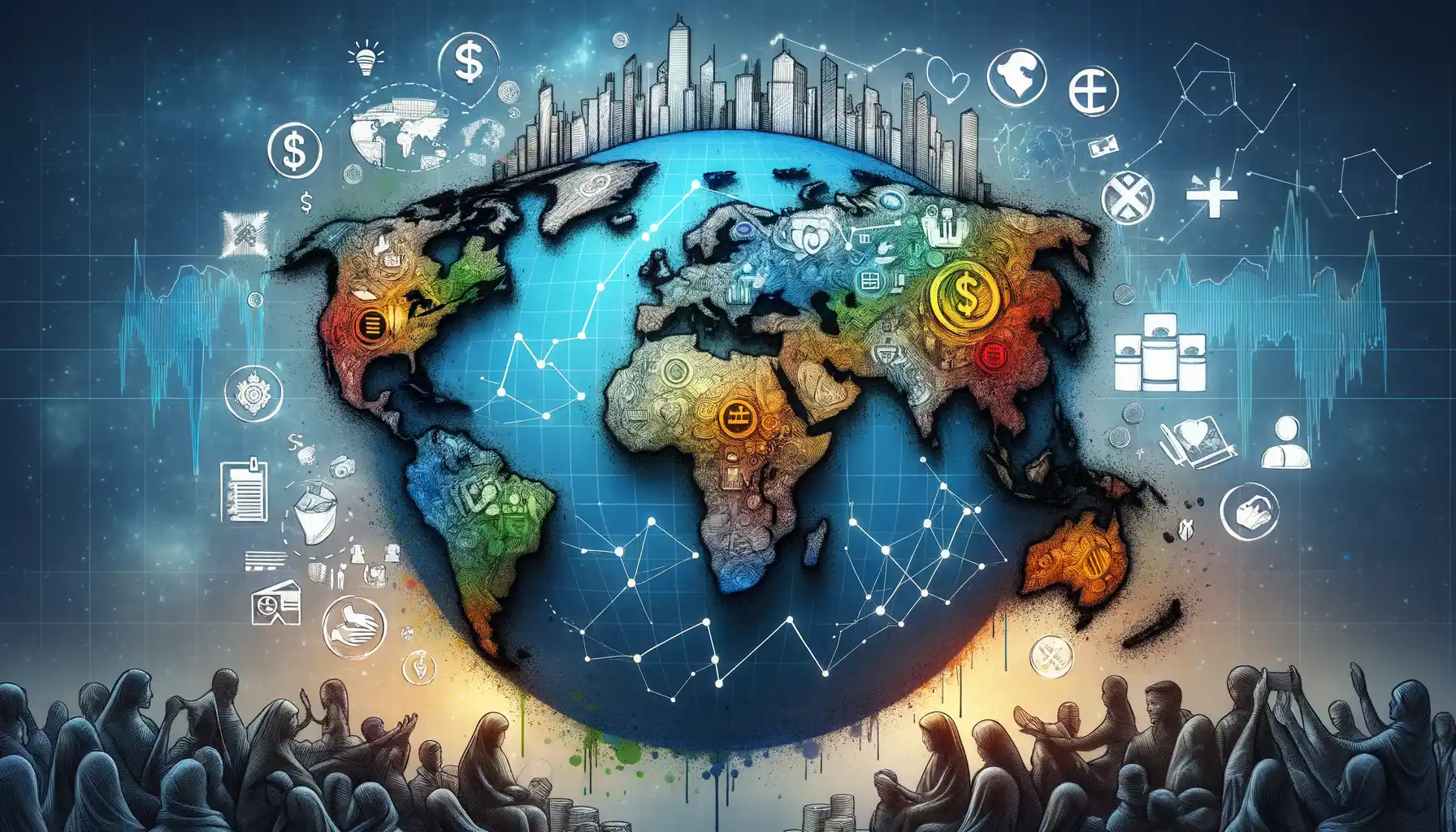History and Origin of Red Cross Symbols on Currency
A Glimpse Into the Birth of the Red Cross Emblem
Picture this: it’s the mid-19th century, and the world is grappling with the bloody aftermath of war. Amidst this chaos, a Swiss businessman, Henri Dunant, witnesses unimaginable suffering during the Battle of Solferino in 1859. His experience became the seed of an idea—an international symbol that transcends nations and conflict, standing for aid and humanity. The now-iconic *red cross on a white background* was born, deliberately mirroring Switzerland’s flag but reversing the colors. Its message? Neutrality and compassion, even amidst carnage.
So how did this emblem make its way onto currency? Turns out, as humanitarian aid efforts and global reach expanded, so did the need for financial mechanisms to support them. Embedding the Red Cross emblem on banknotes and stamps wasn’t just a design quirk; it became a striking reminder of hope and solidarity, even in the world of cold, hard cash.
Currencies That Carry the Symbol—A Global Connection
While not every country incorporates the Red Cross, many have done so historically. Here are a few standout examples:
- Italy: During the early 20th century, Italy featured the emblem on wartime emergency notes, reinforcing its commitment to humanitarian aid.
- Japan: Post-World War II, Japan’s currency carried the emblem as a nod to its international rehabilitation efforts.
- Switzerland: Unsurprisingly, as the Red Cross’s birthplace, Swiss designs often pay homage to their revolutionary creation.
From battles to banknotes, this emblem has traveled far—carrying stories of resilience, healing, and unity.
The Legal and Humanitarian Importance of the Emblem

A Lifeline Amidst Chaos: The Emblem’s Legal Role
The Red Cross emblem isn’t just a symbol; it’s a shield, an internationally recognized beacon of hope and neutrality. Legally protected under the Geneva Conventions, this emblem screams, “Do not touch!” in the face of armed conflict. For medics tending to the wounded on battlefields or convoys delivering emergency aid, this symbol can mean the difference between life and death. Imagine chaotic warzones where trust is scarce—this simple design cuts through hostilities, demanding respect universally.
Its legal power doesn’t stop at wars. Think humanitarian missions during pandemics or earthquakes. The emblem assures that resources reach those in desperate need, untainted by political motives. This isn’t just bureaucracy—it’s about justice and humanity interwoven into law.
- Protection: Safeguards medical personnel, aid workers, and vulnerable civilians from harm.
- Respect: Commands adherence by all parties, including contentious combatants.
- Neutrality: Guarantees impartial aid delivery, unhindered by borders or biases.
The Human Thread We Can’t Forget
On a deeply human level, the emblem whispers: “You are not alone.” For refugees clutching their children, soldiers writhing in pain, or families digging through rubble, this symbol is a promise—a tangible one. It signifies solidarity when words fail. The emotional weight it carries is profound; heroes and helpers alike lean on its silent authority, trusting it will open doors, even in the grimmest corners of our world.
Its presence on currency magnifies this message. Whenever a civilian holds a coin or note adorned with the emblem, they’re reminded not only of global crises but also of shared responsibility. It transforms something as ordinary as money into a messenger of compassion.
Usage in Global Financial and Humanitarian Contexts

The Unexpected Union of Finance and Humanitarianism
The presence of the Red Cross symbol on international currency ties two vastly different worlds: the calculated precision of global finance and the heartfelt urgency of humanitarian aid. Think about it—how often do we pause to consider what those small yet powerful emblems mean as they pass through our hands? They’re not just decorative marks; they’re whispers of unity, hope, and history in a chaotic financial landscape.
In times of crisis, currencies bearing this emblem have unexpectedly become tools of survival. For instance:
- War zones: Aid organizations use Red Cross-backed funds to bridge desperate gaps in emergency supplies.
- Natural disasters: The symbol instills trust in donors when time is short and lives are on the line.
Beyond emergencies, there’s a diplomatic dance happening behind the scenes. Governments rely on this emblem to inspire a sense of neutrality and compassion, particularly when sending funds to volatile areas. It subtly says, “This money is for humanity, not politics.”
An Emblem Breathing Life Into Global Transactions
What makes this symbol so extraordinary in financial contexts is the weight it carries without uttering a word. Picture an exhausted volunteer handing out provisions funded by bills stamped with the Red Cross insignia. The emblem transforms cold, hard currency into something warm—something life-saving.
And let’s not forget: the world’s largest humanitarian networks trust this emblem to ensure safe passage for their resources. From refugee camps in Syria to earthquake relief in Haiti, its silent power resonates globally. It’s no exaggeration to say these modest marks carry lives in their ink.
Controversies Surrounding the Use of Red Cross Symbols

How Misuse Sparks Ethical and Legal Firestorms
The universal recognition of the Red Cross symbol has turned it into a magnet for disputes, unraveling ethical dilemmas that few could anticipate. Picture this: a humanitarian emblem—meant to protect lives during wars—is suddenly plastered across commercial products or used as a marketing gimmick. Alarm bells ring, don’t they?
One of the most hotly debated issues is the misuse of the symbol in for-profit branding and advertising. The innocent bystander might not blink at a first-aid kit adorned with a bold, red cross. But, here’s the kicker—this act often violates international law under the Geneva Conventions. The symbol isn’t just a fancy design; it carries weighty legal and humanitarian obligations!
- Tech companies have faced backlash for app icons featuring the symbol, sparking calls for stricter enforcement.
- Even major retailers, knowingly or unknowingly, have stepped into the controversy when selling products misusing the emblem.
The Tension Between Cultural Understanding and Global Norms
Cultural confusion adds yet another layer to the controversy. In some places, the red cross is viewed merely as a generic health-related icon. Countries where alternative symbols like the Red Crescent or Red Crystal dominate often approach the emblem with less reverence.
Imagine traveling and seeing the symbol casually displayed on storefronts, unaware that its misuse risks diluting its critical purpose in conflict zones. Those little acts of oversight lead to a broader question: how do we balance cultural contexts while upholding international laws designed to save lives?
The issue forces us to reflect, criticize, and ask tough questions. When does ignorance become complicity? And how much is at stake when trust in a globally recognized emblem starts to crumble? It’s messy, but it’s worth pondering.
Future Implications and Preservation of the Symbol

Preserving a Legacy Etched in Currency
The timeless nature of the Red Cross symbol, emblazoned on banknotes and coins, isn’t just ink or metal—it’s a whisper from history urging us to care, to remember. But how do we protect this beacon of hope in an ever-changing world? Let’s face it, symbols can lose their potency if mishandled or overused in modern designs. To ensure its survival, we must plan with both cultural reverence and legal watchfulness.
- Digital transformation: As currency goes digital, will the Red Cross symbol stay visible? Or could it vanish with the swipe of an app?
- Education matters: Spreading awareness to younger generations could give the emblem a fresh lease on life.
- International collaboration: Aligning governments, banks, and humanitarian organizations is no small feat, but vital for preservation.
Modern Challenges, Timeless Responsibilities
From counterfeit concerns to political misuse, the pressures on the Red Cross emblem are stacking up. Imagine a world where such a globally acknowledged sign becomes diluted by misinterpretation—heartbreaking, isn’t it? By rethinking policies and investing in education, humanity can keep this cherished emblem unmistakably linked to compassion, neutrality, and relief. In the end, its survival isn’t just about rules; it’s about honoring the lives and stories that shaped it.
